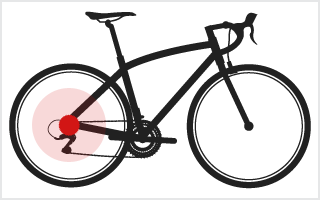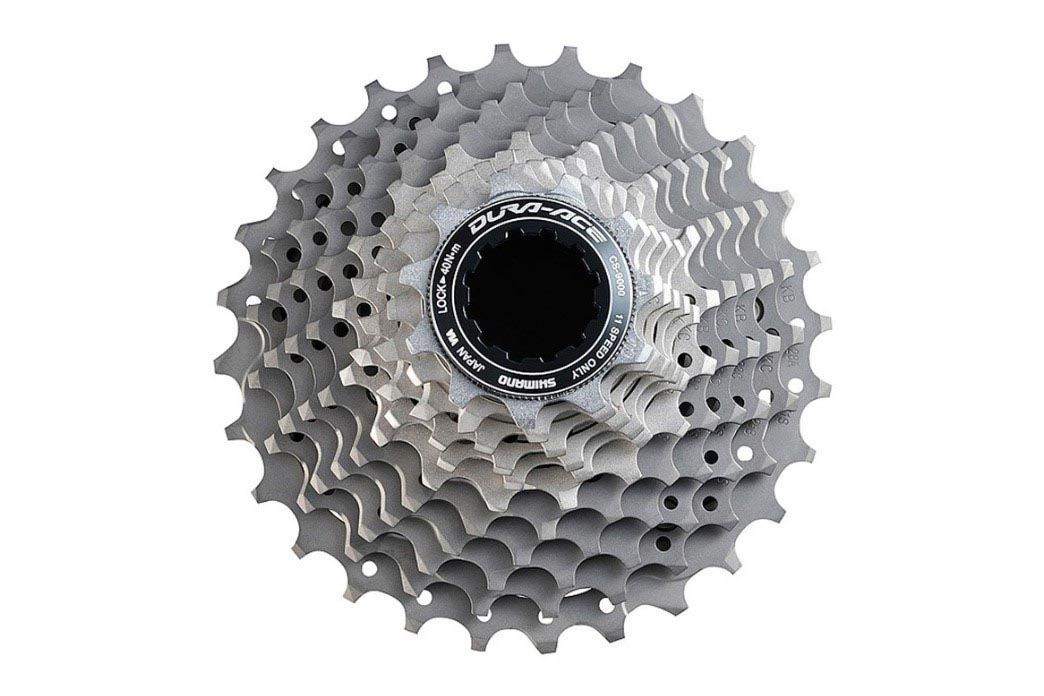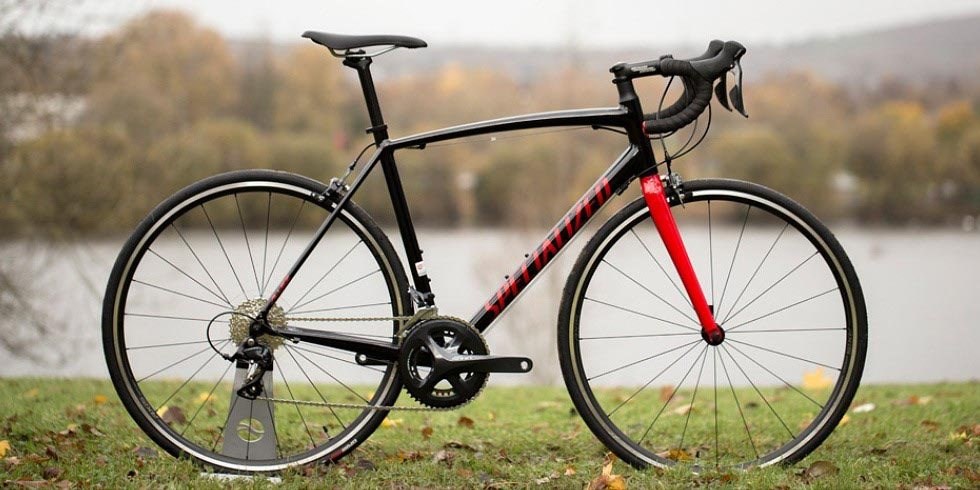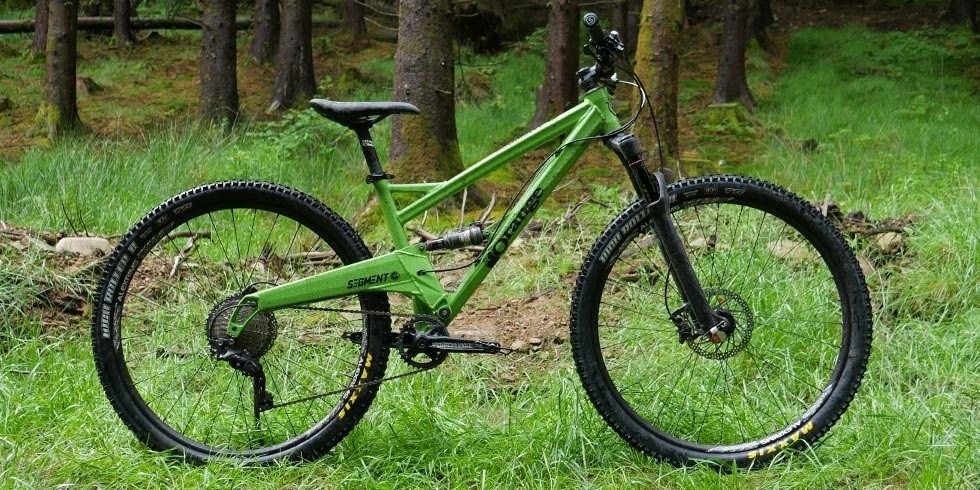The groupset is all the parts that make up the drivetrain and brakes of a bike, transferring power from your legs to the rear wheel to moving you along and slowing you down. They vary significantly with discipline, with road and mountain bikes requiring different things from the groupset. Pricing can vary enormously and expectedly reflects the performance gains. The greater the price, the more features, lighter weight and better materials.
Road groupsets and mountain bike groupsets have significant differences, catering to their riding styles, with strength, weight and gear ratios varying in importance between the two. The three big drivetrain manufacturers found on the majority of bikes are Shimano, SRAM and Campagnolo.
1Chainset
Also referred to as the crankset, the chainset consists of two crank arms combined with one, two or three chainrings, depending on the application. Some chainsets are just the crank arms with the axle being a part of the bottom bracket (see below), whereas others have the axle fixed to the driveside arm. Pedals are attached to the ends of the crank arms.

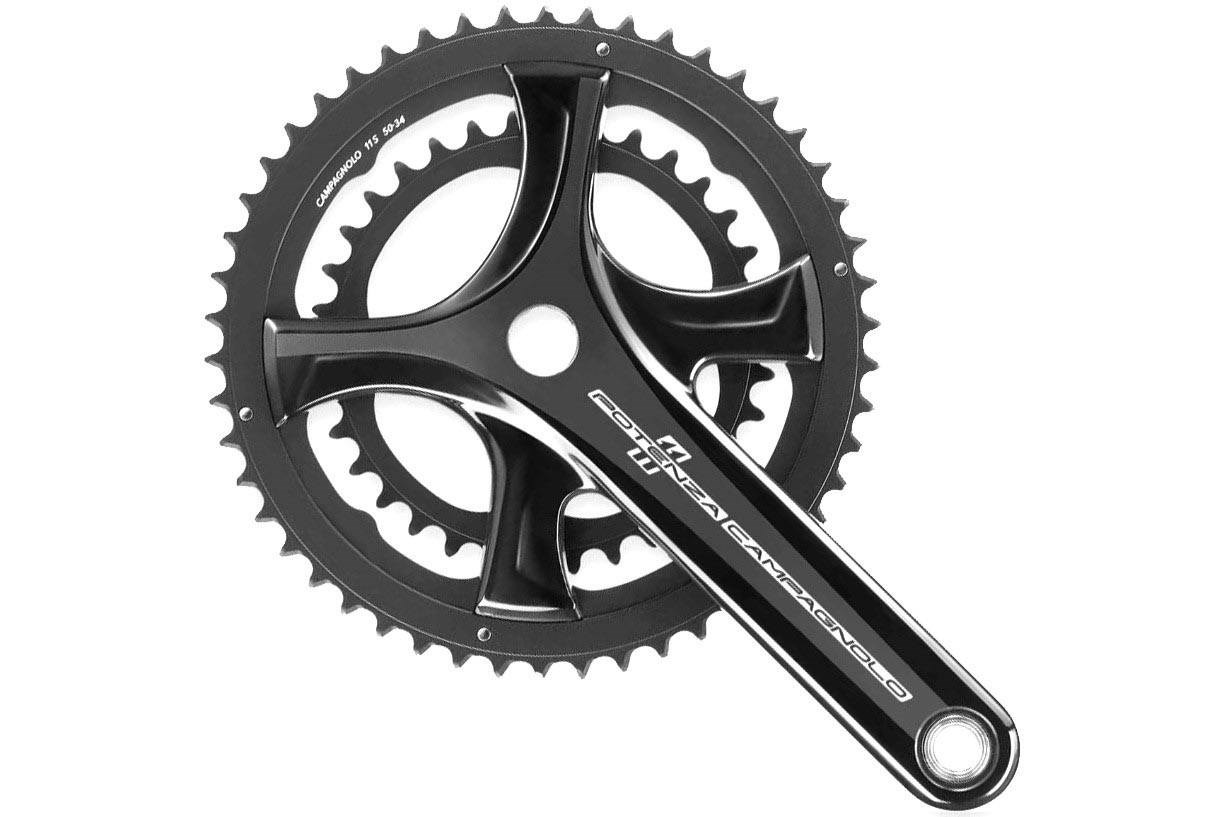
2Bottom Bracket
The bottom bracket is what connects the chainset to the bicycle. It sits inside the frame and includes bearings allowing the chainset to spin freely. Some bottom brackets include the axle (as pictured), which the chainset connects to. Other bottom brackets are bearings only, with a hole in which the axle of the chainset fits into. There are threaded bottom brackets and pressfit options.
Browse Bottom Brackets

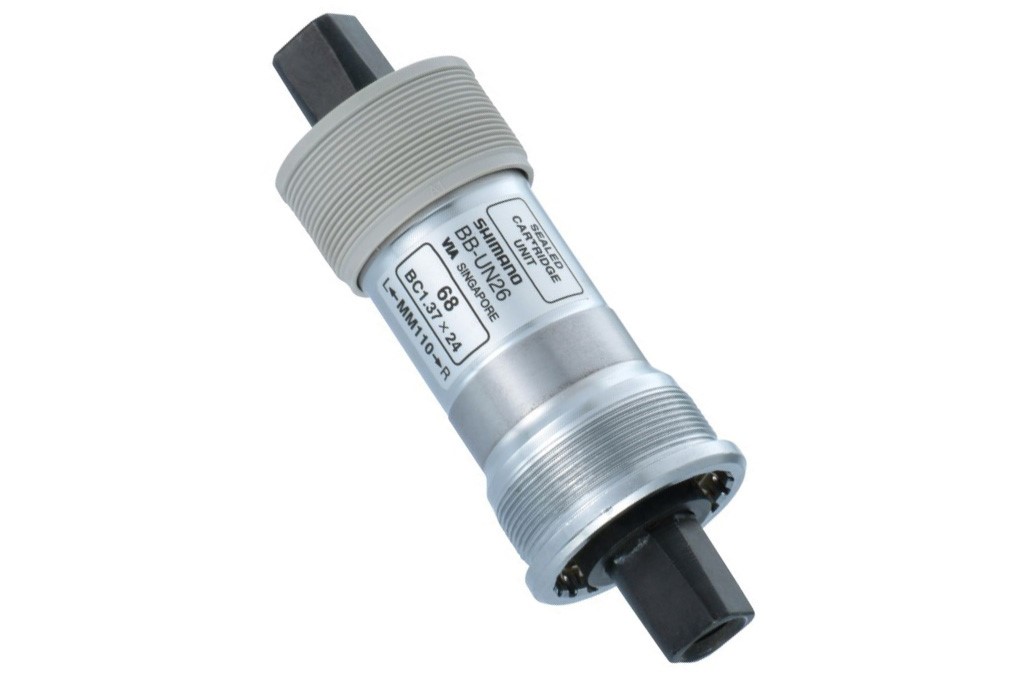
3Brakes
The stoppers. The vast majority or mountain bikes have disc brakes. They have a caliper that grabs onto a rotor, which is attached to the centre of the wheels. Many road bikes have disc brakes but most still have rim or caliper brakes that squeeze the top of the rim. Rim brakes use cables to pull the arms together to squeeze the rim of the wheels.
Browse Brakes
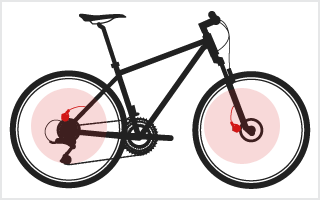
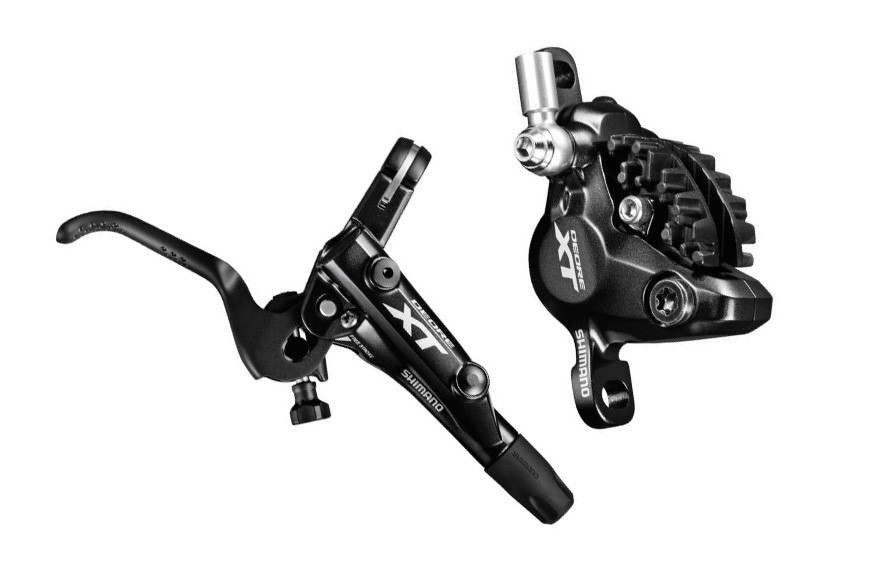
4Brake Levers
Brake levers are what activate the brakes. Road bike brake levers double as the shifters. They have multiple movements to shift and brake separately. Mountain bike brake levers only actuate the brakes. Both mountain and road brakes can either use a cable or hydraulic fluid to activate the brakes.
Browse Brake Levers
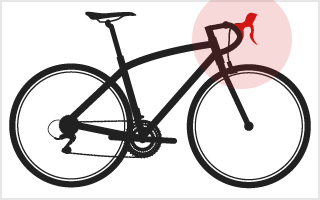
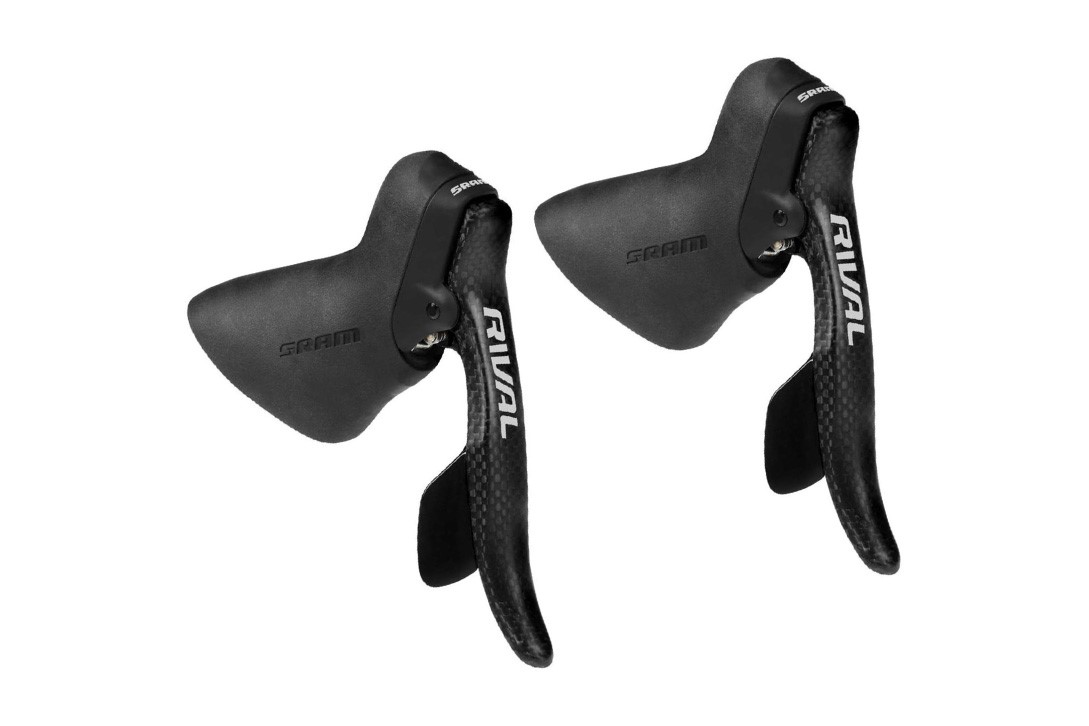
5Shifters
The shifters use a cable that connects to the derailleurs (see below) to change the gears. Most mountain bikes bikes use trigger shifters attached to the handlebar to do this. Road bikes combine the brake lever and shifter into one unit. The left shifter will change the front derailleur and the right will change the rear derailleur. Electronic shifting can be found on very high end bikes too.
Browse Shifters
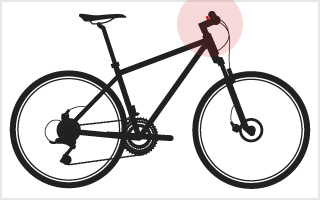
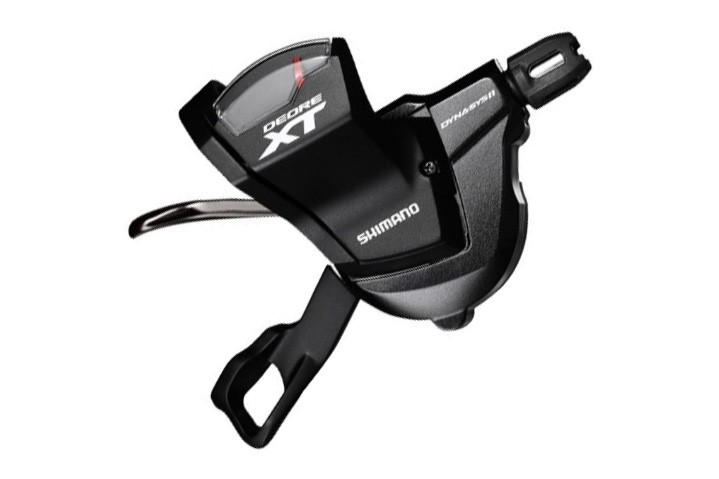
6Derailleurs
Also known as ‘mechs’, the derailleurs are used in conjunction with the shifters to change the gears. There are often two derailleurs, one in the front and one in the rear. The front derailleur changes the front gears (or chainrings) while the rear derailleur changes the rear gears on the cassette. Front derailleurs are becoming less common on mountain bikes.
Browse Derailleurs
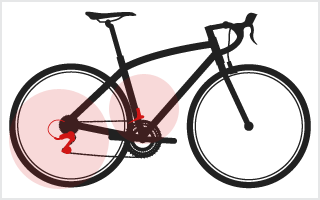
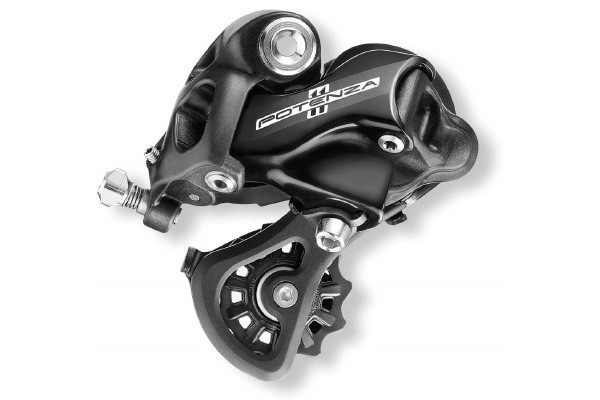
7Chain
The chain is what drives the bike. It connects the chainset to the cassette, going through the derailleurs to move the bike. Chain are specific to how many speeds are in the drivetrain. So, an 11 speed chain will only work with an 11 speed cassette etc.
Browse Chains

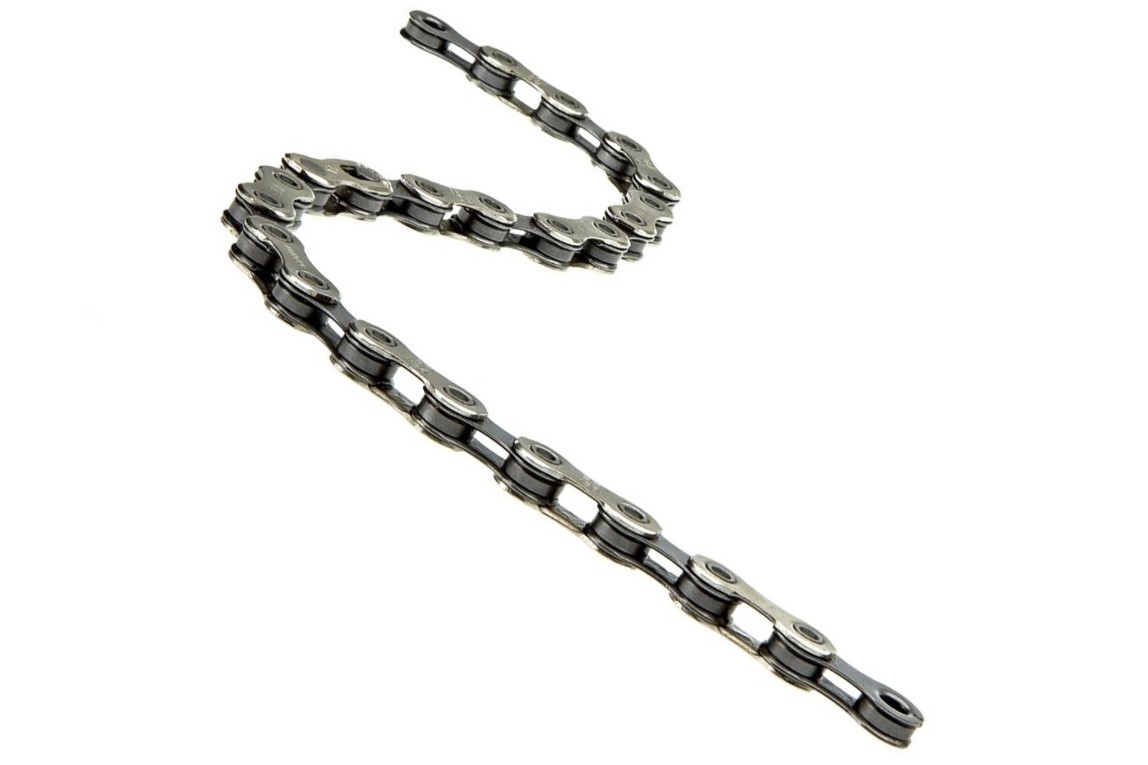
8Cassette
The cassette is the cluster of gears or sprockets on the rear wheel. It has teeth of varying numbers to set the different ratios of difficulties of the gears. The number of gears range from 6-12. Rear derailleurs are used to move the chain up and down the cassette to change the gears, and are actuated by the shifters. The bigger the sprocket, the easier it is to pedal, while the smaller the sprocket, the harder it is.
Browse Cassettes
